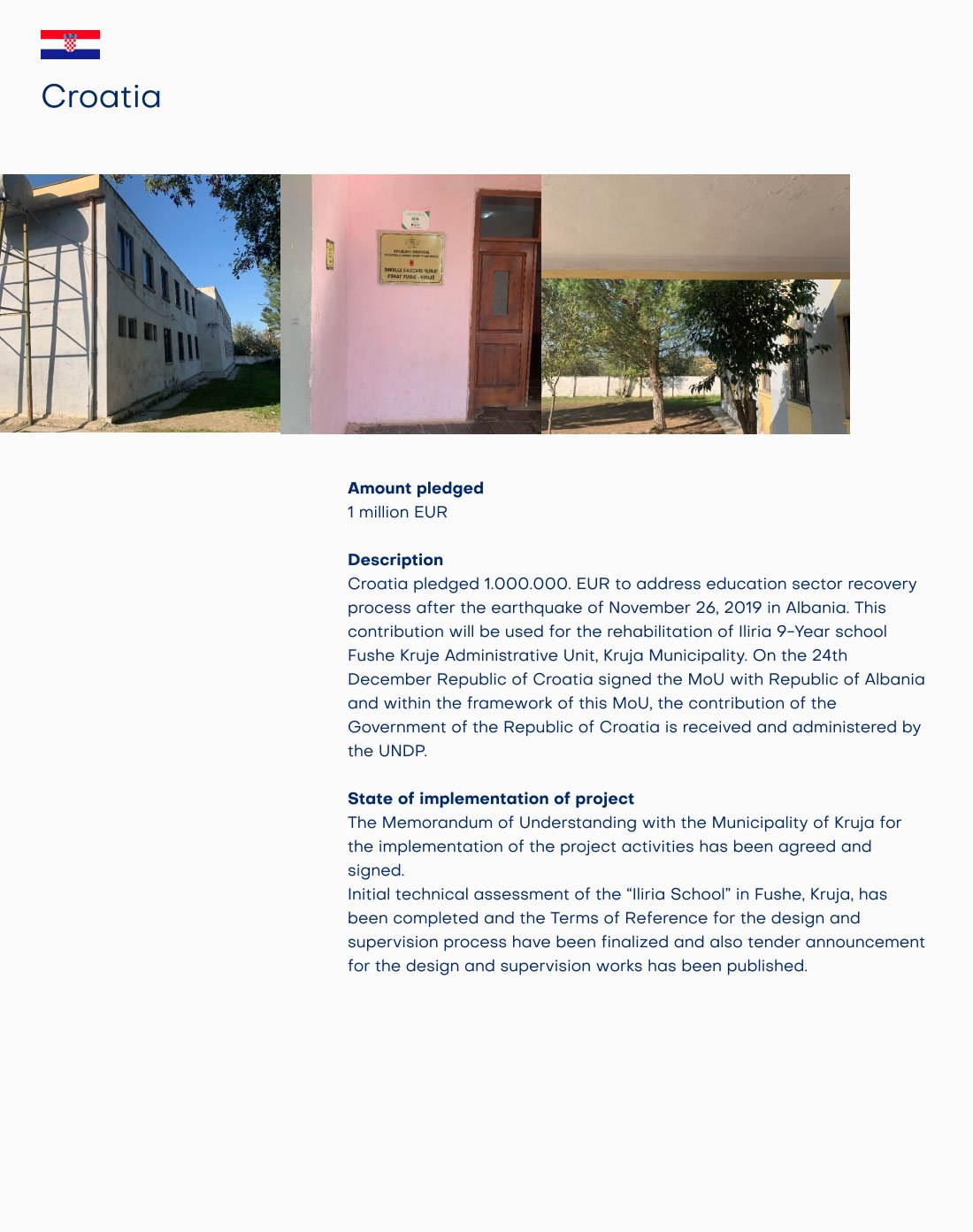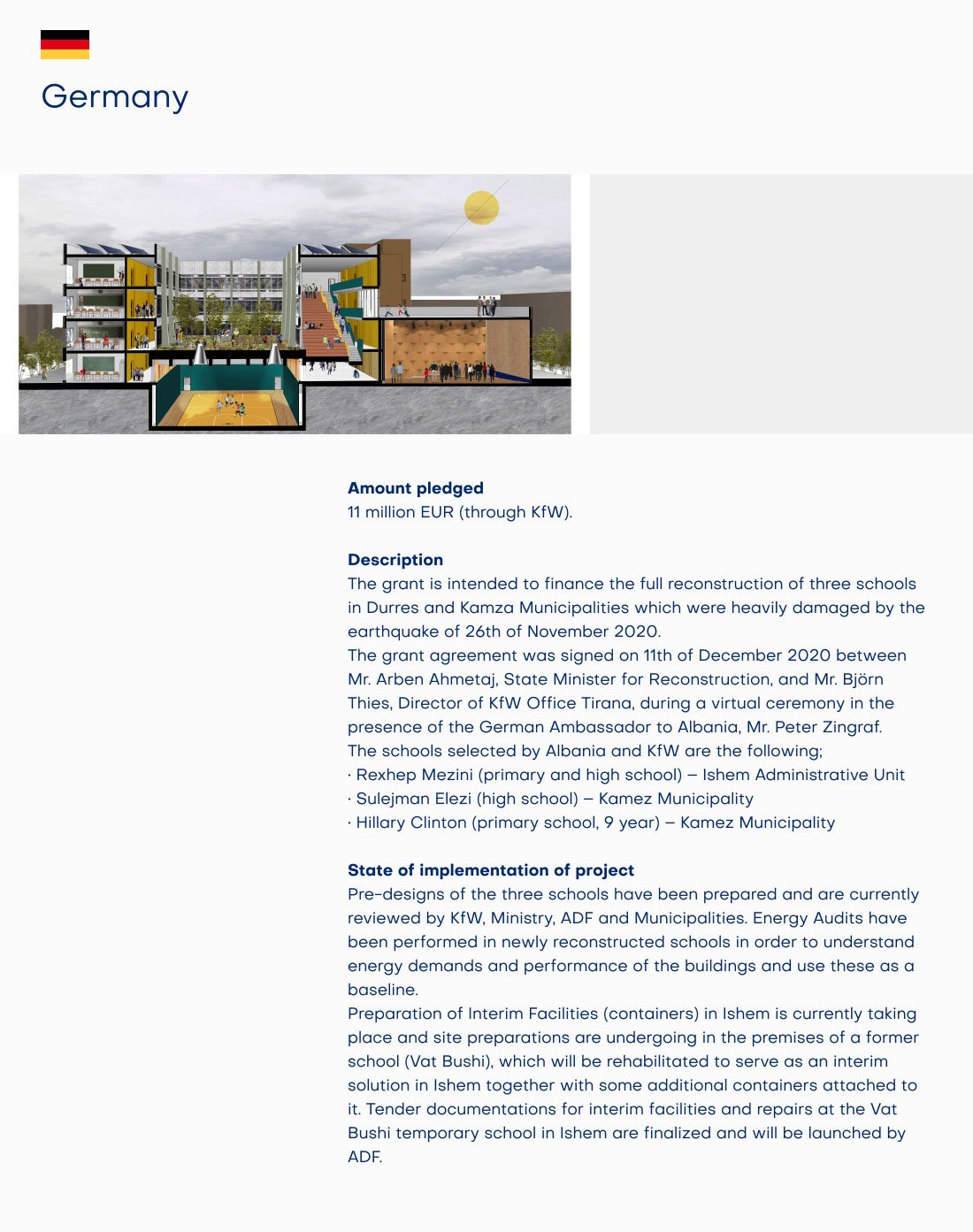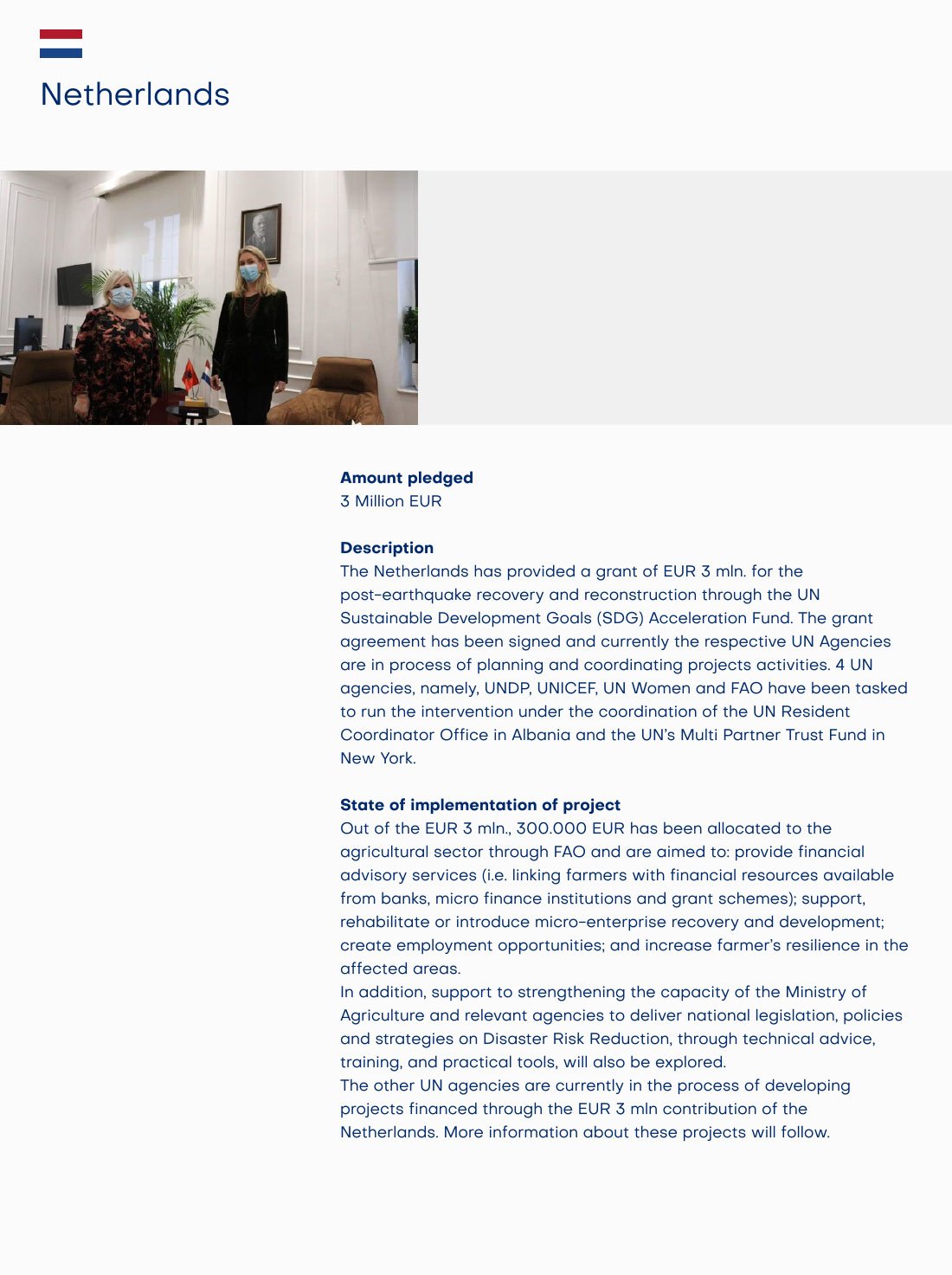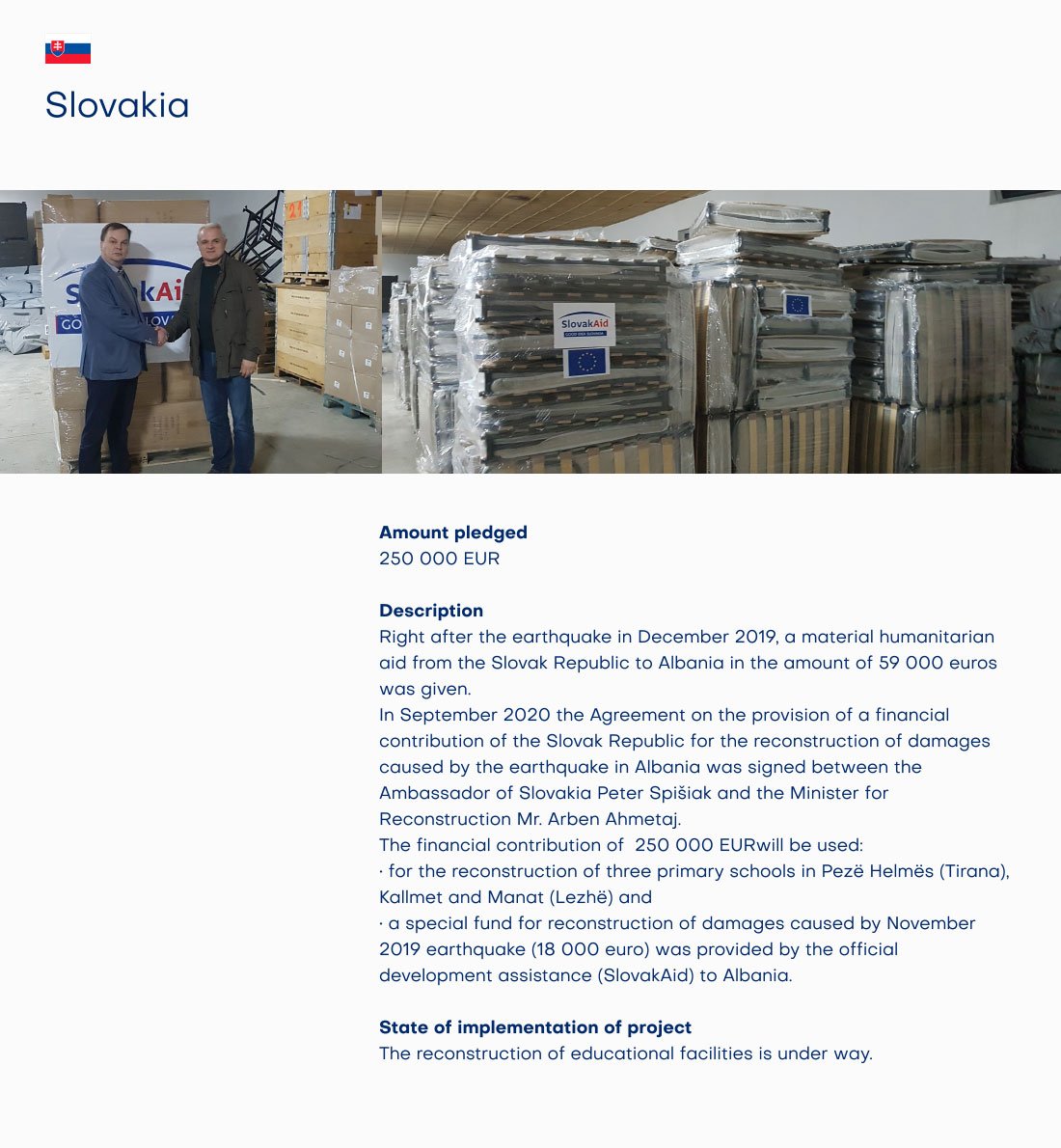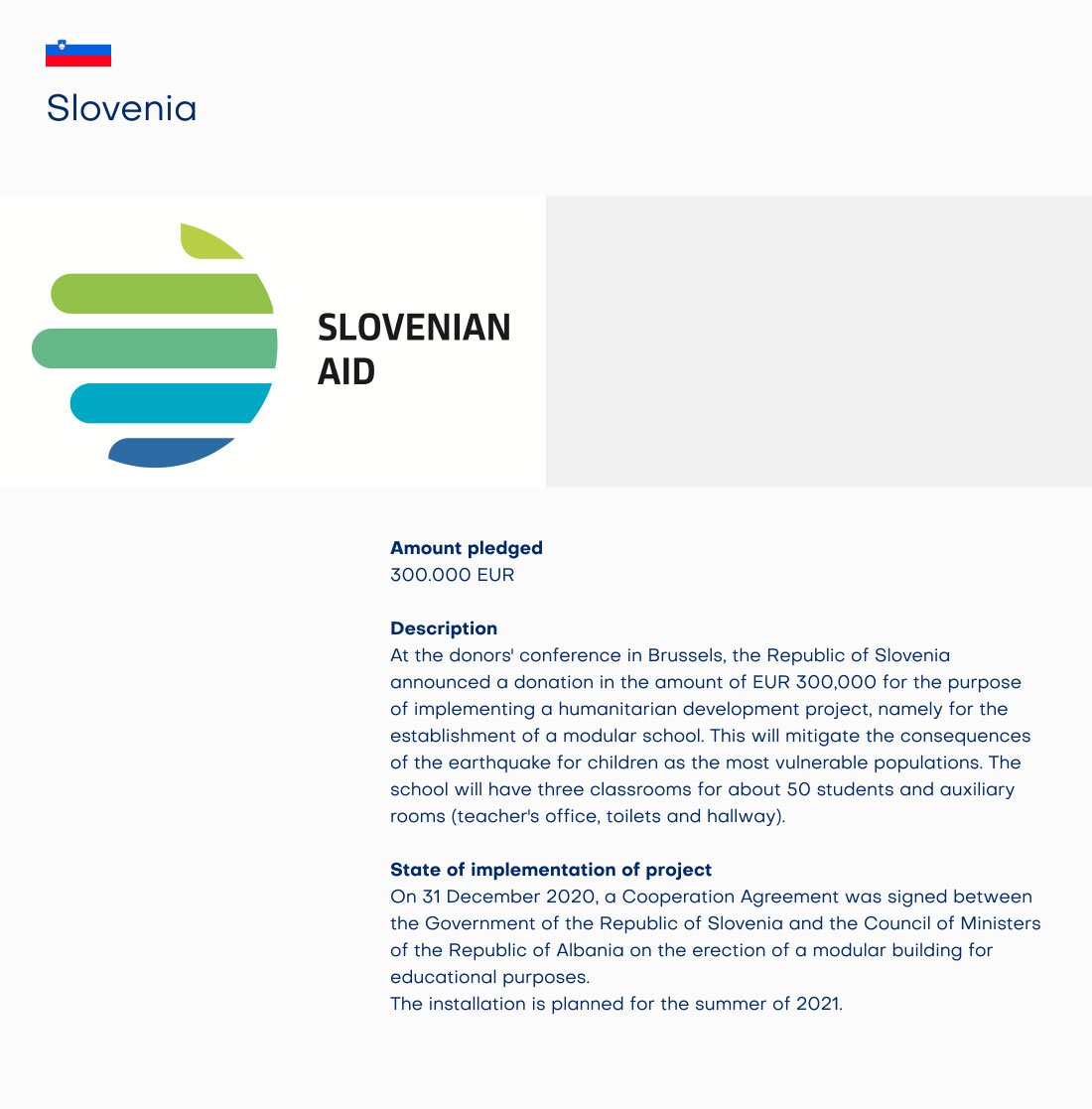UNDP
EU4Schools I: April 2020 - November 2021 / EU4Schools II: November 2020 - May 2024
Overall Objective
The overall objective is to improve disaster recovery process and reduce social and economic losses at the community level in line with the engagement with central and local governments.
The specific objectives are:
- To support repairing and reconstruction, including basic furnishing, of education facilities in municipalities affected by the earthquake according to international standards;
- To provide increased transparency, accountability and inclusiveness to the recovery process..
The Action targets the following groups:
- Local service providers of education, including: creches, pre-schools, basic schools, and secondary schools;
- Children, students and their families in the areas affected by the earthquake;
- Teachers and academic staff;
- Local communities.
Summary of the Project
The 6.3 magnitude earthquake that hit Albania on 26 November 2019 has left 51 people dead and injured at least 913 others. Eleven municipalities situated in three prefectures (Tirana, Durrës and Lezha), with an approximate population of 1,185,286 persons, have suffered to varying degrees from the earthquake with 202,291 people affected directly or indirectly. According to government sources, around 17,090 affected inhabitants had to vacate their homes. For the first time in recent history, the Government of Albania announced a State of Natural Emergency in the three prefectures. According to the findings of the PDNA, the total effect of the disaster in the 11 municipalities amounts to 985.1 million EUR (121.21 billion ALL). Most of the damages are recorded in the Housing sector (78.5%), followed by the Productive sector (8.4%) and the Education (7.5%) sector.
According to the PDNA, damages were reported to 321 educational institutions (including crèches, pre-schools, basic schools, secondary schools, vocational and education training schools, high education schools and dormitories) in the 11 affected municipalities, representing 24% of all educational establishments. About 90% of damaged institutions are in the public sector. The municipalities of Tirana and Durres have the highest share of damage, with 55% and 21%, respectively. Schools were also damaged in smaller municipalities such as Vora, where half of all education facilities were either fully or partially destroyed. Furthermore, 60% of destroyed and damaged schools are in rural areas. In addition to infrastructure, the earthquake also damaged physical assets such as furniture, labs, ICT equipment, libraries, textbooks, and other learning materials. The physical infrastructure of education facilities, especially in rural areas, do not meet current regulations on safety and accessibility.
In conclusion, the project aims at restructuring and reconstructing 63 educational facilities damaged by the 2019 earthquake.
Activities
Educational facilities repaired and/or reconstructed and equipped, with a strong emphasis on sustainability, inclusiveness, and environmental protection:
- Technical assessment of education facilities and identification of the needs for infrastructure intervention.
- Contracting of companies for the preparation of detailed technical design (FEED) and supervision services for educational facilities to repair or reconstructed.
- Contracting construction companies and implementation of the civil, mechanical and electrical works for repair and reconstruction
- Testing and commissioning for repaired and reconstructed facilities
- Formal handover of repaired and reconstructed education facilities
- Final inspection of works at the end of defects notification period
- Preparation of technical specifications for furniture and equipment for repaired and reconstructed facilities
- Purchase and delivery of furniture and equipment for each repaired and reconstructed educational facility
- Conducting a training needs assessment of the teachers of primary and basic education in IT and digital literacy to identify gaps and upgrading strategies and implement the recommendations.
- Strengthen local capacities in Operations and Maintenance and health and safety in school environment.
New arrangements to for the maintenance of education facilities between municipalities and UNDP
- Signature of Memorandum of Understanding (MoU) with municipalities and specific dialogue and interventions to ensure their full commitment during the Action implementation and at the end for the maintenance of the facilities
- Adoption of manual for maintenance and sustainability
- Local staff (women and men) trained to apply international standards during operations and maintenance
Community members consultation in reconstruction process
- Community led local consultations on the interventions
Community members receive access to visibility materials, keeping them informed of the construction process
- Updating the online, publicly accessible BI (Business Intelligence) dashboard available to all partners and the public through web technologies, for showing Action progress.
- Communicate the results through visibility actions.
Expected Results
The main results are as follows:
Result 1: Education facilities repaired and furnished
Result 2: Education facilities reconstructed and furnished
Result 3: Strengthened transparency, accountability and inclusiveness in this process of recovery
Result 4: Learning environment of educational institutions is improved
Programme Manager: Alessandra Frontoni
Email: Alessandra.Frontoni@eeas.europa.eu


